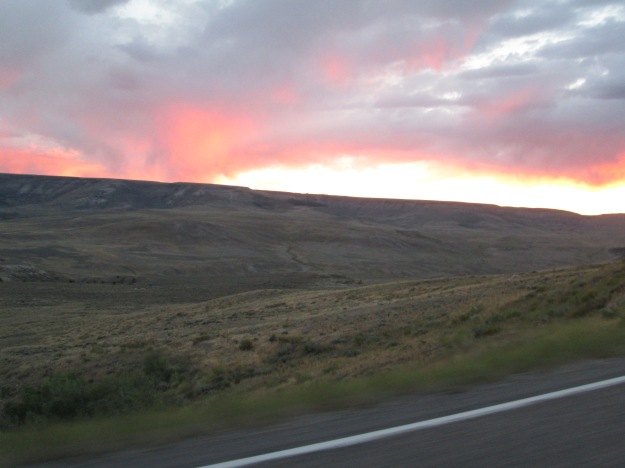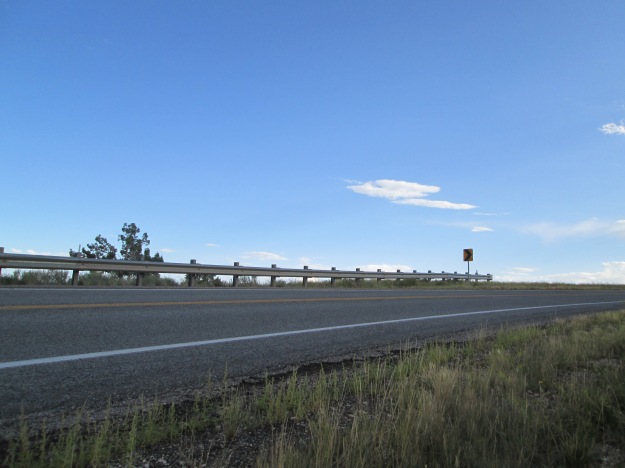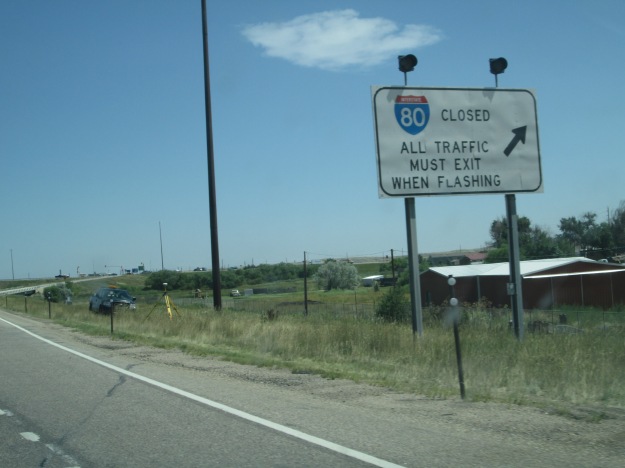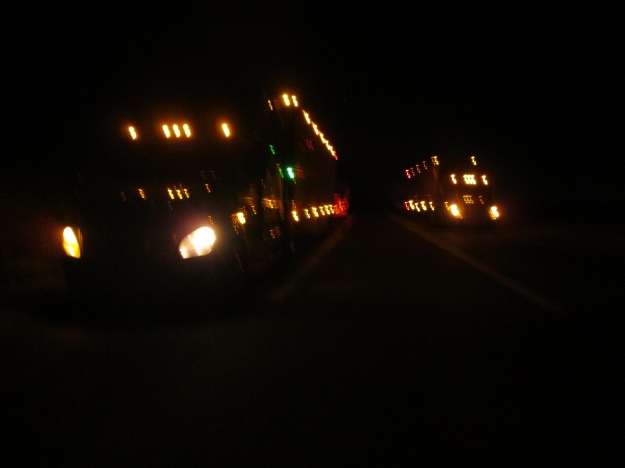August 18th, 2014
There are very few people in Wyoming.
I suppose I had always known this; however, the full force of it had never struck me before quite so insistently as it did this time. Perhaps it was more jarring than usual because of the crowded feel of Salt Lake City, or perhaps because, for once, I was not coming from South Dakota or Montana or Iowa, all of which are also comparatively unpopulated states.
I entered Wyoming via a back road, Route 6, which wiggles its way through the mountains in the southwest corner of the state, through miles and miles of empty wilderness.

Except, of course, it isn’t wilderness. True, there are few people there, but you can tell from the fencing that most of that open space is ranchland, open space for cattle.
This, too, is an amazing drive. Rural highways aren’t built like interstates; they don’t refrain from being terrifying. In many spots you find yourself driving along the edge of what seems to be a sheer cliff, the view of which makes you feel as if you’re on top of the world. It’s a wonderful way of seeing the land.

But the interstate, too, has its charms. There aren’t too many places in the nation where you can shut down one lane of a two-lane interstate for construction and not create so much as a blip in the traffic.

There also aren’t too many places left where it’s forty miles to the next town, and where it only takes you half an hour to get there, because the speed limit is eighty mph.
The city of Cheyenne, the capital of Wyoming, has a population of roughly 65,000 people. As you drive into town, you see a sign boasting that Cheyenne contains 2300 hotel rooms. To put this in perspective, the Circus Circus in Reno has 1600 hotel rooms. One hotel in one not-so-large city in Nevada, which, is, itself, not one of the most populous states.
Sixty-five thousand people. That is fewer than the number of people who live in my suburb of a suburb of a suburb of a suburb in the Bay Area. It’s incredible, and wonderful.
Sometimes I think I’d like to live in a place like this, were it not for the winter weather. I don’t even mind the snow very much, as long as I don’t have to drive. It seems to me as if you wouldn’t want to drive here in the winter, if you could avoid it. At numerous places along Interstate 80, you see signs like this:

Can you imagine what the response would be, if I-80 in the Bay Area (which is the same road, by the way) was shut down due to weather? Traffic would be backed up for weeks.
It seems a fair trade. Our traffic is backed up daily, if not hourly. Perhaps having your highway closed several times a year is a small price to pay for no rush hour, or, in our case, rush morning, rush evening, and rush afternoon.
Yes, it’s a different experience, being out here where there are probably more cows than people. I was so exhausted that I crashed in a parking area – not a full rest area, but a parking area with no facilities, the kind that truckers use. I suspect that my truck looked rather small, given the company.

States like Wyoming provide more of these types of amenities, probably because their towns are so few and far between. And in a place like this, away from even the small cities, on a highway unilluminated by any lights but those of the headlights of the occasional trucks passing by, it is so dark, and the sky is so clear and free from smog, that you can see the Milky Way. Do you know how many years it’s been since I’ve seen the Milky Way?
Urban lights are beautiful, too, in their way. There’s nothing quite like gazing down from a hilltop over a vast field of multi-colored city lights, white and yellow and green and red and orange, as if the city itself is some sprawling, highly decorated Christmas tree. Or making a turn on a dark rural highway and spotting the lights of a city in the distance, lights that offer promise, security, human companionship. Those lights beautify the landscape in a different way, in a way that speaks to our most human of instincts, the desire to be with others of our own kind. The lights are a sign, a symbol, an indication that there are more of us waiting just around the bend – they are not merely lights, but welcoming beacons.
Yet in a state like Wyoming, they seem but pale reflections when matched against the glowing, glorious, gigantic field of stars.
* * *
If you would like to see more photos from my cross-country travels, please follow my new Pinterest account at http://www.pinterest.com/lorilschafer/.
For updates on my forthcoming memoir The Long Road Home, which I am drafting during this road trip, please follow my blog or subscribe to my newsletter.

















